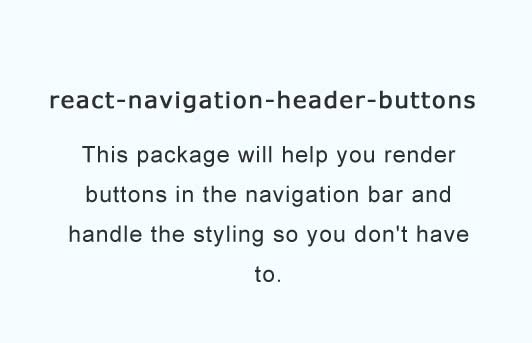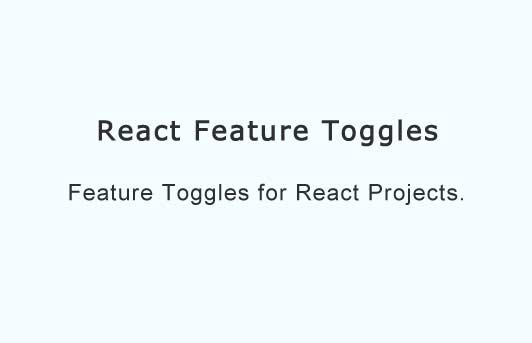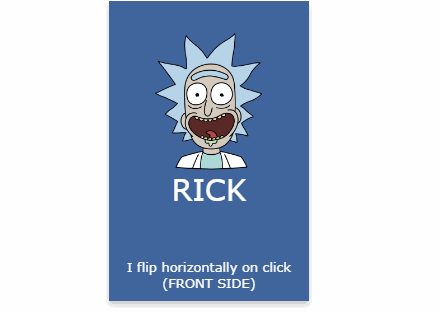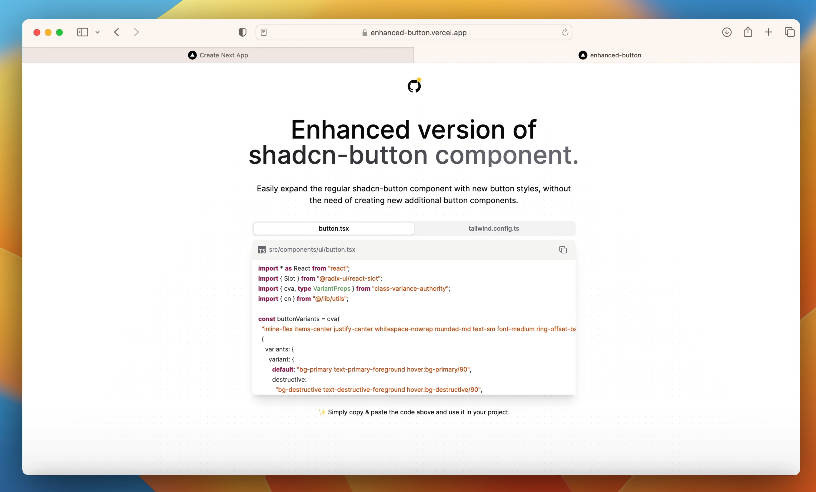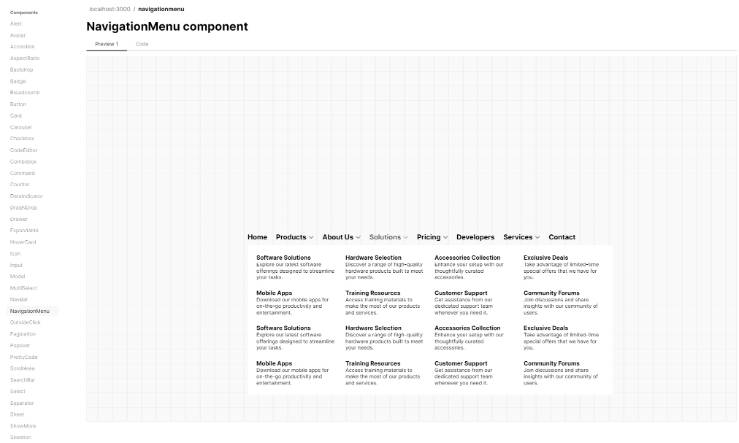react-navigation-header-buttons
This package will help you render buttons in the navigation bar and handle the styling so you don't have to. It tries to mimic the appearance of native navbar buttons and attempts to offer simple and flexible interface for you to interact with. Typed with Flow and ships with TS typings.
Demo App
Contains many examples and is available via expo. Sources are in the example folder.
Install
yarn add react-navigation-header-buttons
Quick Example
Please see also how to integrate in your project.
import Icon from 'react-native-vector-icons/Ionicons';
import HeaderButtons, { HeaderButton, Item } from 'react-navigation-header-buttons';
const IoniconsHeaderButton = passMeFurther => (
// the `passMeFurther` variable here contains props from <Item .../> as well as <HeaderButtons ... />
// and it is important to pass those props to `HeaderButton`
// then you may add some information like icon size or color (if you use icons)
<HeaderButton {...passMeFurther} IconComponent={Ionicons} iconSize={23} color="blue" />
);
static navigationOptions = {
title: 'Vector Icons',
headerRight: (
<HeaderButtons HeaderButtonComponent={IoniconsHeaderButton}>
{/* use Item or HeaderButtons.Item */}
<Item title="search" iconName="ios-search" onPress={() => alert('search')} />
<HeaderButtons.Item title="select" onPress={() => alert('select')} />
</HeaderButtons>
),
};
Props
HeaderButtons accepts:
| prop and type | description | note |
|---|---|---|
| left: boolean | whether the HeaderButtons are on the left from header title |
false by default |
| HeaderButtonComponent: React.ComponentType<*> | component that renders the buttons | Typically, you'll want to provide a component that wraps HeaderButton provided by this package, as seen in the quick example. However, you're free to use your own component (see HeaderButton for reference). |
| OverflowIcon?: React.Element<*> | React element for the overflow icon | you need to provide this only if you need an overflow icon |
| overflowButtonWrapperStyle?: StyleObj | optional styles for overflow button | there are some default styles set, as seen in OverflowButton.js |
| onOverflowMenuPress?: ({ hiddenButtons: Array<React.Element<*>>, overflowButtonRef: ?View }) => any | function that is called when overflow menu is pressed. | this will override the default handler |
Item accepts:
| prop and type | description | note |
|---|---|---|
| onPress: ?() => any | function to call on press | if this is a falsy value, the button won't react to touches |
| title: string | title for the button, required | |
| show: "always" or "never" | string specifying if the icon should be shown or hidden in overflow menu | "always" by default |
| ButtonElement?: React.Node | optional React element to show as button. Use this for completely custom buttons. | if neither IconComponent nor this is defined, will render text with the title |
| iconName?: string | icon name, used together with the IconComponent prop |
|
| buttonStyle?: StyleObj | style to apply to the button | applies to both icon and text |
| buttonWrapperStyle?: StyleObj | style to apply to the touchable element that wraps the button | |
| testID?: string | ID to locate the view in e2e tests | testID of the overflow button is exported under OVERFLOW_BUTTON_TEST_ID |
HeaderButton accepts:
| prop and type | description | note |
|---|---|---|
| IconComponent?: React.ComponentType<*> | component to use for the icons, for example from react-native-vector-icons |
|
| iconSize?: number | iconSize | |
| color?: string | color of icons and buttons |
You may also pass other props that will be passed to the underlying react-native-platform-touchable. For example, pass background prop for different ripple effects.
Please note that HeaderButton also requires other props to function correctly. Some of these props are passed from <Item .. /> (such as iconName) and also <HeaderButtons ... />. When wrapping HeaderButton it is thus important to not forget to pass down all props the wrapping component receives (this is easy using the spread operator), as documented in the quick example.
How to integrate in your project
This sections covers how you should use the library in your project. Please note that there are numerous example screens.
1 . Define one file where the styling of header buttons is taken care of.
// MyHeaderButtons.js
import * as React from 'react';
import MaterialIcons from 'react-native-vector-icons/MaterialIcons';
import HeaderButtons, { HeaderButton, Item } from 'react-navigation-header-buttons';
// define IconComponent, color, sizes and OverflowIcon in one place
const MaterialHeaderButton = props => (
<HeaderButton {...props} IconComponent={MaterialIcons} iconSize={23} color="blue" />
);
export const MaterialHeaderButtons = props => {
return (
<HeaderButtons
HeaderButtonComponent={MaterialHeaderButton}
OverflowIcon={<MaterialIcons name="more-vert" size={23} color="white" />}
{...props}
/>
);
};
export const Item = HeaderButtons.Item;
2 . Import header buttons from the file defined previously.
// SomeScreen.js
import { MaterialHeaderButtons, Item } from './MyHeaderButtons'
static navigationOptions = {
title: 'Screen with header buttons',
// use MaterialHeaderButtons with consistent styling across your app
headerRight: (
<MaterialHeaderButtons>
<Item title="add" iconName="search" onPress={() => console.warn('add')} />
<Item title="edit" onPress={() => console.warn('edit')} />
</MaterialHeaderButtons>
),
};
